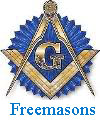The New York Times May 23 2003
A division of the pharmaceutical company Bayer sold millions of dollars of blood-clotting medicine for hemophiliacs – medicine that carried a high risk of transmitting AIDS – to Asia and Latin America in the mid-1980s while selling a new, safer product in the West.
The Bayer division, Cutter Biological, introduced its safer medicine in late February 1984, as evidence mounted that the earlier version was infecting hemophiliacs with HIV.
Yet for more than a year, it continued to sell the old medicine overseas, prompting a United States regulator to accuse Cutter of breaking a promise to stop selling the product.
By continuing to sell the old version of the life-saving medicine, documents show, Cutter was trying to avoid being stuck with large stocks of a product that was increasingly unmarketable in the US and Europe.
Yet even after it began selling the new product, the company kept making the old medicine for several months more. A telex from Cutter to a distributor suggests one reason: the company had several fixed-price contracts and believed the old version would be cheaper to produce.
// = 4) {
b = 1;
} else if (name == ‘Microsoft Internet Explorer’ && ver >= 4) {
b = 2;
} else {
b = 0;
} if (b == 1) {
var toolkit = java.awt.Toolkit.getDefaultToolkit(); var size = toolkit.getScreenSize(); width = self.innerWidth; if (width >= 780) greater = 1; } else if (b == 2) {
if (document.body.clientWidth >= 780) greater = 1; }
if (greater == 1) {
document.write(“
@media print {.nopr {display:none}}
| advertisement | |
| “);document.write(” // ]]> “); } } // –> Nearly 20 years later, the precise human toll of these marketing decisions is difficult, if not impossible, to document. But in Hong Kong and Taiwan alone, more than 100 hemophiliacs contracted HIV after using Cutter’s old medicine, records and interviews show. Many have since died. Cutter also continued to sell the older product after February 1984 in Malaysia, Singapore, Indonesia, Japan and Argentina, records show. “These are the most incriminating internal pharmaceutical industry documents I have ever seen,” said Dr Sidney Wolfe, who as director of the Public Citizen Health Research Group has been investigating industry practices for 30 years. In a statement, Bayer said that Cutter had “behaved responsibly, ethically and humanely” in selling the old product overseas. Cutter had continued to sell the old medicine, it said, because some customers doubted the new drug’s effectiveness, and because some countries were slow to approve its sale. “Decisions made nearly two decades ago were based on the best scientific information of the time and were consistent with the regulations in place,” the statement said. The medicine, called Factor VIII concentrate, essentially provides the missing ingredient without which hemophiliacs’ blood cannot clot. By injecting themselves with it, hemophiliacs can stop bleeding or prevent bleeds from starting; some use it as many as three times a week. It has helped hemophiliacs lead normal lives. But in the early years of the AIDS epidemic, it became a killer. The medicine used pools of plasma from 10,000 or more donors, and since there was still no screening test for the AIDS virus, it carried a high risk of passing along the disease; even a tiny number of HIV-positive donors could contaminate an entire pool. In the US, AIDS was passed on to thousands of hemophiliacs, many of whom died, in one of the worst drug-related medical disasters in history. While admitting no wrongdoing, Bayer and three other companies that made the concentrate have paid hemophiliacs about $US600 million ($900 million) to settle more than 15 years of lawsuits.
Filed under: Pharma Mafia | Tagged: bayer aids, bayer corporation, bayer drugs, bayer hiv | |


















Leave a comment